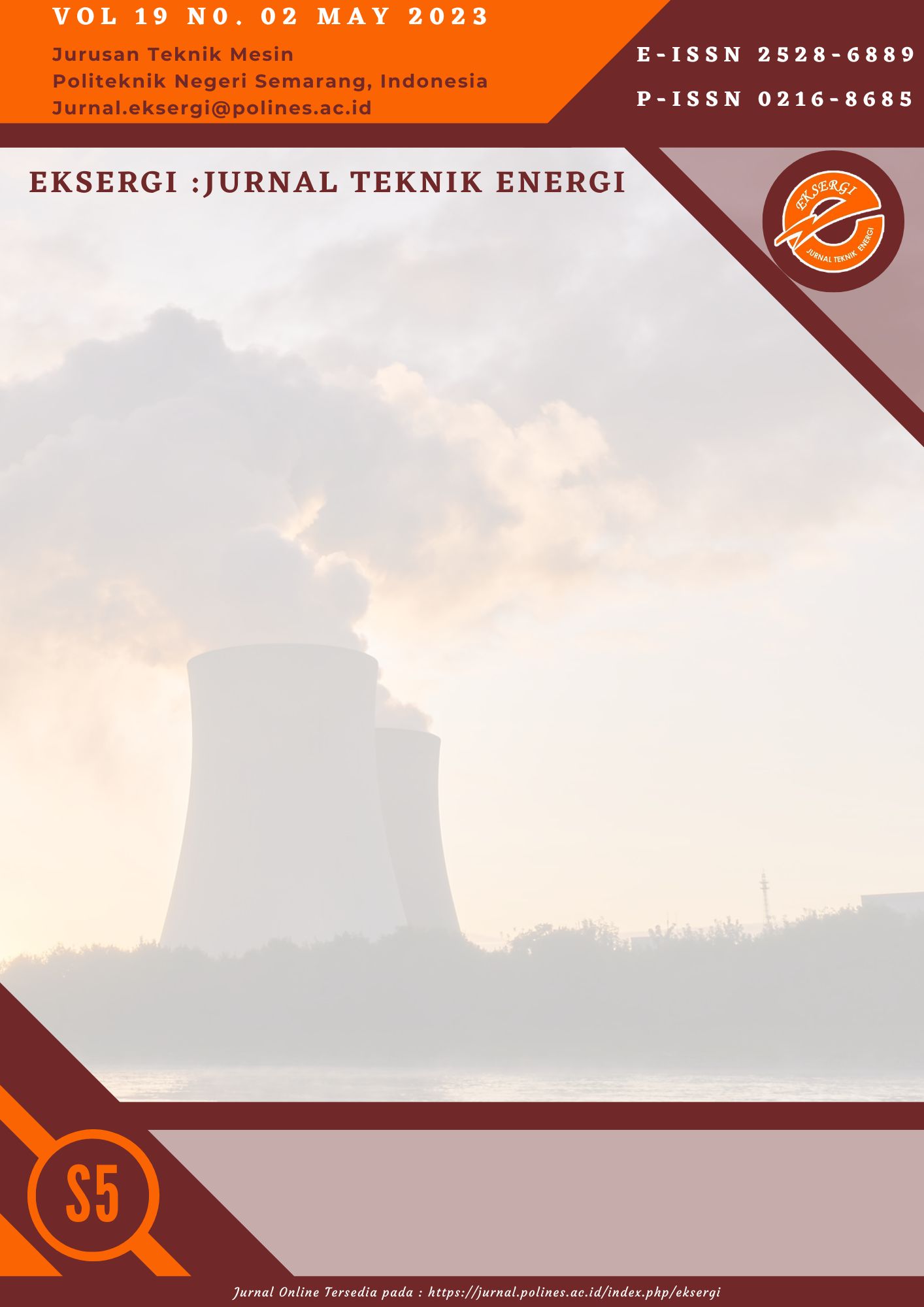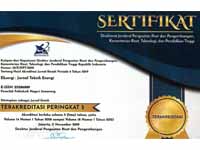Analysis of the Effect of Battery Voltage Drop on Light Intensity on LED and Hologen Type Main Lights in Gentayu UNDIP Electric Cars to Get Good Lighting
DOI:
https://doi.org/10.32497/eksergi.v19i2.4439Abstract
Abstrak - The Gentayu UNDIP electric car requires a lighting system, especially the main lighting system, namely the headlights which must have sufficient light but must be economical in power consumption, because the power used uses a battery that is separate from the main battery for propulsion. So that with a separate battery, the available power is limited, for charging the battery a separate mechanism is made and it can be charged simultaneously with charging the main battery for the Gentayu UNDIP electric car. we will try to do a special analysis of the intensity of light in the lighting system of the main lighting system, to get data on the effect of battery power on light intensity. The test was carried out by observing the decrease in light intensity on two types of lamps, namely LED lamps and halogen lamps. 1x10 Lux every 15 minutes with an average voltage drop of 0.06 volts for every 15 minutes. Meanwhile, for halogen type lamps, the average decrease in light intensity is 6x10 Lux every 15 minutes with a voltage drop of 17 volts, so even though the use of LED type lamps has low power consumption in its use, but a decrease in light intensity when used for a long time cannot be avoided, so it is necessary to make a mechanism for the Gentayu UNDIP electric car so that the battery voltage is maintained when the lighting electrical system is used.
References
Daftar Pustaka
Andrean, N. Y.. Sistem Kelistrikan Mobil Listrik Roda 3 Doctoral Dissertation, Universitas Gadjah Mada, Jojakarta : 2013
Akiosaki,S., Ogawa, H., Nakajima, M. Development of an ultra-thin DC brushless motor for a Hybrid Car,JSAE Review, 22(3), 287-292 : 2001
Bosch.. Automotive Electric/Electronic System, Germany, Robert Bosch GmBh :1995
C. Chen, K. Man, and T. Ting, “Design and Realization of a Smart Battery Management System,” Proc. Int. MultiConference Eng. Comput. Sci. Vol. II, vol. II, pp. 14”“17, 2012
Chanpeng, W., Hachanont, P. Design of Efficient In-Wheel Motor for ElectricVehicle, Energi Procedia, 56, 525-531.[13]Janpan, I., Chaisricharoen,R., Boonyanant, P.,(2012), Control of the Brushless DC Motor in Combine Mode,Procedia Engineering, 32, 279-285 : 2014
Dwifa, M,Beny. Design of Electric City Car using Wheel Hub Motors Type, Faculty of Engineering, University Dipenegoro, Semarang : 2017
Faiz J. et al., Simulating and Analisis of Brushless DC Motor Drivers Using hysteresis, Rump Comparion and Predictive Current Control Techniques, Simulation Practice and Theory, International Journal of the Practice and Theory, Federation of European Simulation Societies, Elsevier, 3, 647-636. 1994
K. Doug. Electric Vehicle Charging Technology Analysis and Standards, Florida Solar Energy Center, Unired States: 2015
N. Scharich, B. Schniter, A. Herbert, and M. S. Islam, “Battery management system using Arduino,” 2017 IEEE Technol. Eng. Manag. Conf., pp. 384”“387, 2017.
S. N. Patil, S. Kendre, and R. C. Prasad, “Battery Monitoring System using Microcontroller,” Int. J. Comput. Appl., vol. 28, no. 6, pp. 11”“14 : 2011.
Qiangpin,W., Wenchao,T. Design of Permanen Magnet Brushless DC Motor Control System Based on ds PIC30F4012, Procedia Engineering, 29, 4223-4227 : 2012
Purwadi, A., Dozeno,J., Heryana, N., Testing Performance of 10kW BLDC Motor and LiFe PO4 Battery on ITB-1Electric Car Prototype, Procedia Tecnologi, 11, 1074-1082 : 2013
Setiyawan,T., Ismail,R., Bayuseno, A.P., Analysis of battery consumption of Gentayu electric car on different types of headlight. AIP Conference Proceedings 1977;13 Desember 2017 : Solo, Indonesia. AIP Publishing; 2017. 1788 (1). p 030068, 2018
Schwickart T.,Voos, H., Hadji, J.R., Darouach., M., Rosich, A., (2014). Designand Simulation of a Real-time Implementable Energi-efficient Model-Predictive Cruise Controller for Electric Vehicle,Journal of the Franklin Institute, 352(2), 603-625: 2014
Y. Xing, E. W. M. Ma, K. L. Tsui, and M. Pecht, “Battery Management Systems in Electric and Hybrid Vehicles,” Energies, vol. 4, no. 12, pp. 1840”“1857, 2011.
Downloads
Published
Issue
Section
License
Authors who publish with this journal agree to the following terms:Authors retain copyright and grant the journal right of first publication with the work simultaneously licensed under a Creative Commons Attribution License that allows others to share the work with an acknowledgement of the work's authorship and initial publication in this journal.
Authors are able to enter into separate, additional contractual arrangements for the non-exclusive distribution of the journal's published version of the work (e.g., post it to an institutional repository or publish it in a book), with an acknowledgement of its initial publication in this journal.
Authors are permitted and encouraged to post their work online (e.g., in institutional repositories or on their website) prior to and during the submission process, as it can lead to productive exchanges, as well as earlier and greater citation of published work (See The Effect of Open Access).







